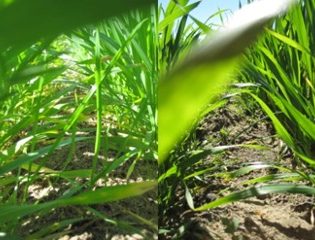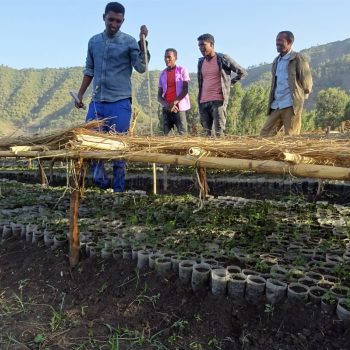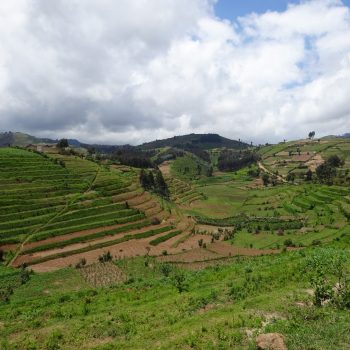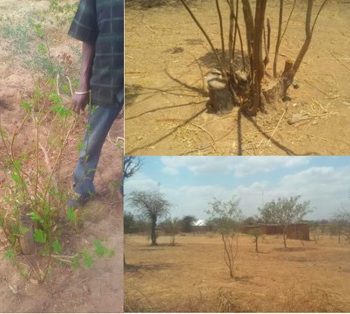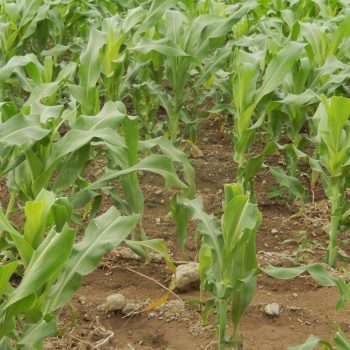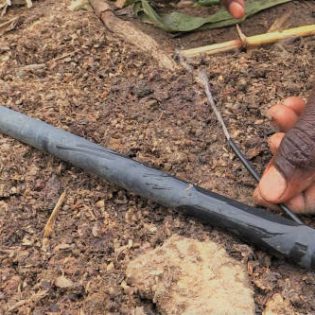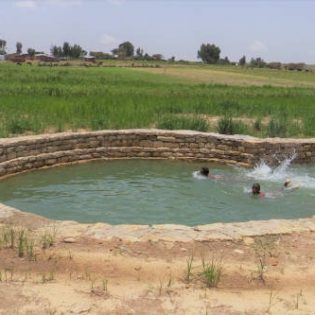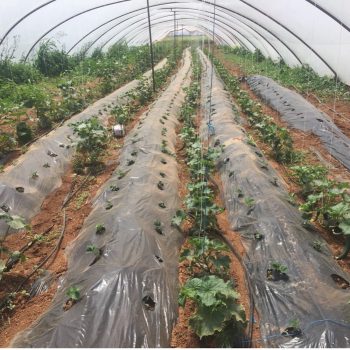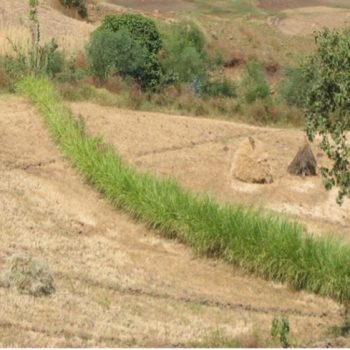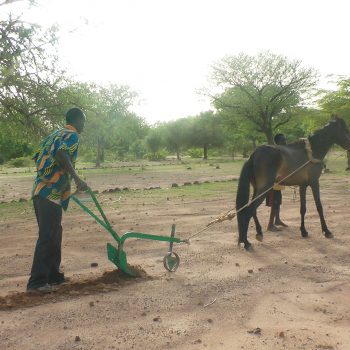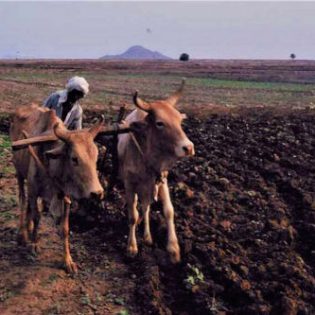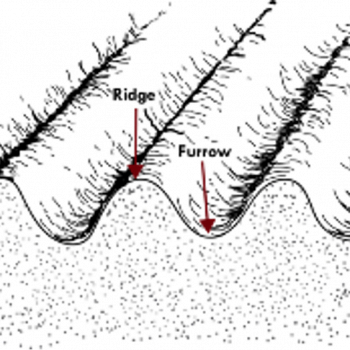Also, the windbreak should be placed perpendicular to the prevailing wind direction; otherwise, it might funnel the wind and increase wind speed (Allaby, 2015).
Windbreaks impact the microclimate and crops in several ways. One benefit of windbreaks is the mechanical protection of the crops (Rosenberg, 1983) and reduced soil erosion (Jensen, 1954). The decreased transport and mixing of air results in steeper vertical profiles of air temperature and water vapour in shelter compared to open fields. Diminished turbulent activity decreases the interaction between the layers right above the surface. During the day, when the sensible heat output from the surface is positive, near-surface air temperatures in the sheltered zone are higher than outside the sheltered zone because of this diminished turbulent activity (Cleugh, 1988). At night, when the sensible heat flux is typically negative, this effect would lead to cooler near-surface air temperatures in the sheltered zone (Cleugh, 1988). Outside the sheltered zone, the surface radiative heat losses get replenished faster due to the wind, and air temperatures are higher during the night (Oke, 1995). Windbreaks thus result in higher daytime and lower night-time temperatures due to less mixing of the inversion layer (Rosenberg, 1983). The higher air temperatures in the shelter may extend to the soil, resulting in soil temperatures being substantially higher in sheltered areas (Geiger et al., 2003). Higher soil temperature will result in more rapid root respiration and organic matter decomposition and cause a more significant release of carbon dioxide from the soil (Rosenberg, 1983). The higher soil temperatures may also result in rapid seed germination (Rosenberg, 1983). Wind speed reduction also lowers evaporation processes which improves the water use efficiency (Cleugh, 1988).
Windbreaks also influence the air humidity of a site. Humidity and vapour pressure gradients are increased in the windbreak shelter. The higher daytime relative humidity results from reduced water vapour transport and vertical mixing (Geiger et al., 2003). Vapour pressure remains higher in shelter throughout the night since the surface usually remains the vapour source, except during periods of dew deposition. The relative humidity in shelter is generally greater during the day, despite the contrary influences of the increased temperature and absolute humidity. At night relative humidity in a shelter is more remarkable because of the low air temperatures (Rosenberg, 1983). Dew is also enhanced in sheltered areas due to greater humidity and colder night-time temperatures (Oke, 1995). Lower wind speeds and higher humidity can also lead to increased fungal diseases (Rosenberg, 1983). Placing windbreaks on a site can also cause shading and reduce the solar radiation received on a site.
Despite these considerations, many studies show that windbreaks increase crop yield in nearly all cases where it has been tried in a wide range of climatic regimes (Geiger et al., 2003; Grace, 1977). Despite wind being essential in replenishing the CO2 levels needed for photosynthetic activity, Brown and Rosenberg (1972) found that the daytime reductions in CO2 in shelter were not significant and certainly would not affect photosynthetic activity
Additional information
| (semi) Natural unused areas | (semi) Natural unused areas |
|---|---|
| Agriculture | Flood/spate irrigated, Irrigated, Rainfed (Crop) |

